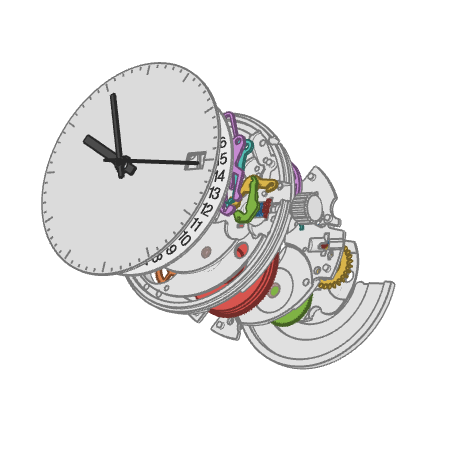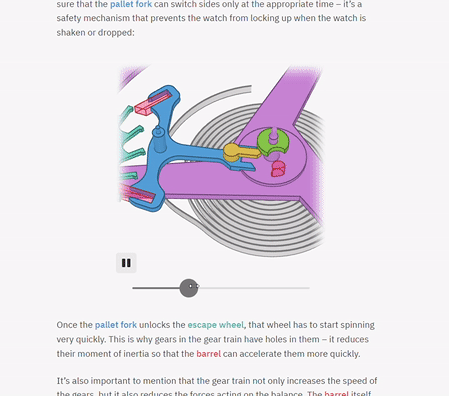This Is the Coolest Explainer on How a Mechanical Watch Works I've Ever Seen
An impressive interactive article that’ll leave you smarter
Google “how does a mechanical watch work” and you’ll no doubt find all kinds of articles and video explainers designed to answer your query. But this post, simply titled Mechanical Watch, by Bartosz Ciechanowski, is the best. Ciechanowski is a programmer who creates beautiful, interactive articles about math, science, and engineering. Lucky for us, he recently took the mechanical watch as his subject.
The article builds a mechanical watch from the ground up, using 100+ interactive images to illustrate every single component of the watch. You start with the mainspring, then build the gear train and escapement, before putting it all together with the mainplate and bridges. The article even goes through winding mechanisms and date wheels.
It’s an amazing interactive piece that gives a renewed appreciation for the mechanical watch. Halfway through, I was just as impressed by the feat of the writer creating the article itself. I first stumbled on the piece on Hacker News (where it was a top-ranked article a couple weeks back), and the programmers commenting on the article were just as fascinated by how the author coded this entirely by hand (not using any frameworks or libraries) — a fitting way to code an article about a mechanical watch. Trust me, you’ll want to play around with this article:
Here’s how Ciechanowski concludes:
In the 1970s mechanical watches started to be dethroned by quartz models, which track time by electronically counting vibrations of a quartz crystal. As technology progressed, typical watches only increased their reliance on digital circuits. Modern smart reincarnations resemble their archetypes only in shape and placement on wrists.
Mechanical watches are not as accurate as digital ones. They require maintenance and are more fragile. Despite all these drawbacks, these devices show a true mastery of engineering. With creative use of miniature gears, levers, and springs, a mechanical watch rises from its dormant components to become truly alive.
Next time you’ve got 15 minutes just to enjoy something, check out Mechanical Watch by Bartosz Ciechanowski.







This is absolutely amazing. I’ve literally never seen a better explanation. I’ve been an enthusiast for over 20 years and have tried to explain this to my wife (amongst others), but I end up with puzzled expressions and requests for another drink (and with that an apparent desire for a new topic). Thank you for helping spread this to the community!!!
Thank you for pointing me in the direction of that article. Absolutely fantastic and a must for any watch enthusiast!